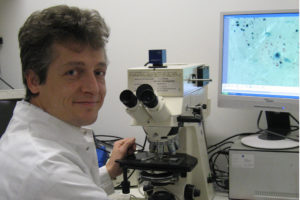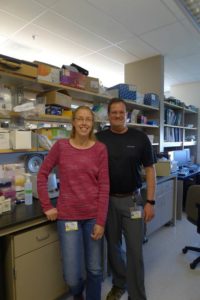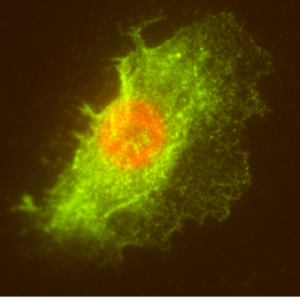It’s definitely a busy summer for the National Foundation for Ectodermal Dysplasias (NFED)! If you follow our communications, you know we are going to be in Washington D.C. in July for the Family Conference and a historic first, Ectodermal Dysplasias Advocacy Day on Capitol Hill.
Those are both incredibly important and major events for us. But, it’s not all we are doing while in our nation’s capital. We have several research projects and a dermatology grand rounds taking place, too.
We are excited to have several researchers at the National Institutes of Health (NIH) interested in the ectodermal dysplasias. The NIH, a part of the U.S. Department of Health and Human Services, is the nation’s medical research agency. It’s located in Bethesda, Md. which is just outside of Washington, D.C.
What Is and Isn’t An Ectodermal Dysplasia?
Conditions affecting tissues of ectoderm have been historically classified as ectodermal dysplasias. For the last 30 years, conditions having two or more tissues of the ectoderm that develop abnormally, because of genetic causes, were included in this group of conditions.
Because of the large number of genetically and clinical diverse conditions meeting this inclusion criteria, there is support for developing an updated and modified classification system for the ectodermal dysplasias. The goal is to develop an approach to classifying the many different ectodermal dysplasias in a logical and consistent manner that better facilitates gathering information and communicating the clinical features or conditions that are associated with a specific condition.
This will improve understanding by affected individuals and family members as well as health care providers and researchers. Ideally, this classification would lend itself to a computerized data base that would be searchable and useful in integrating clinical data, molecular genetics and molecular pathway data.
A group of international experts will reconvene in July in Washington DC, on the NIH campus. Their goal is to come to a consensus on a new classification system to better meet the needs of the ectodermal dysplasias community. The NFED has taken a lead role in this project. Watch for more information after the meeting in July.
Investigating Respiratory and Immune Function Issues
Families have consistently reported increased levels of concerns for respiratory infections, asthma and allergic rhinitis in individual affected by several ectodermal dysplasias. Previous survey studies of our NFED families have confirmed a significant increase in allergic disorders, asthma, eczema, ear infections and sinusitis in affected individuals compared to the general population.
We are thrilled that Dr. Kenneth Olivier and Dr. Alexandra Freeman, NIH experts in pediatric pulmonology (lung disorders) and infectious diseases and immunology will be performing respiratory function testing and immune function testing in individuals affected by ectodermal dysplasias. Their work is a part of a study of craniofacial anomalies. The goal of the study is to develop treatments for the various anomalies, including ectodermal dysplasias.
We are grateful to all of our families who stepped forward to volunteer for this study. It’s taking place July 18-20 at the NIH.
Educating Scientists at NIH
Dr. Maria Morasso, an NIH researcher, is sponsoring a day of ectodermal dysplasias education at the NIH on the Monday following Family Conference. This conference will highlight the current and needed research on the ectodermal dysplasias. I am honored to be able to attend along with several other professionals from our Scientific Advisory Council and NFED funded researchers. Speakers include Drs. Tim Fete, Tim Wright, Clark Stanford, Maranke Koster, Rene D’Souza and Holm Schneider.
Because ectodermal dysplasias are rare, the conditions are not necessarily at the forefront of researchers’ minds. We are hopeful that this day will expose more investigators to the conditions and the enormous need and opportunities that exist to research them.
XLHED and p63 Syndrome Research Updates

Dr. Schneider and Dr. Koster will both attend the Family Conference and updating families on their research. Dr. Schneider treated three babies affected by x-linked hypohidrotic ectodermal dysplasias in utero with EDI200. Those babies appear to have developed normal sweat glands and tooth buds. We look forward to hearing the latest developments in this exciting research.

Dr. Koster will share with families affected by p63 conditions, ankyloblepharon-ectodermal defects-clefting (AEC) syndrome and ectrodactly-ectodermal dysplasia-clefting (EEC) syndrome, the progress her lab team has made on two different projects. In the first, they are working on a potential treatment for skin erosions and in the second, a treatment using an individual’s own stem cells for a cornea transplant.
The Future of Research
All of these projects are incredibly exciting. We have great hope they will benefit our community. We remain committed to supporting these efforts and being the catalyst for new research. As you can imagine, this kind of work takes enormous financial resources. Soon, we will be announcing an opportunity for how you can help us advance research. Stay tuned!
Ectodermal dysplasia can cause a lifetime of challenges. By supporting research, you expand early diagnostics, treatments, pathways toward cures… and hope!Shape Our Futures With Research
